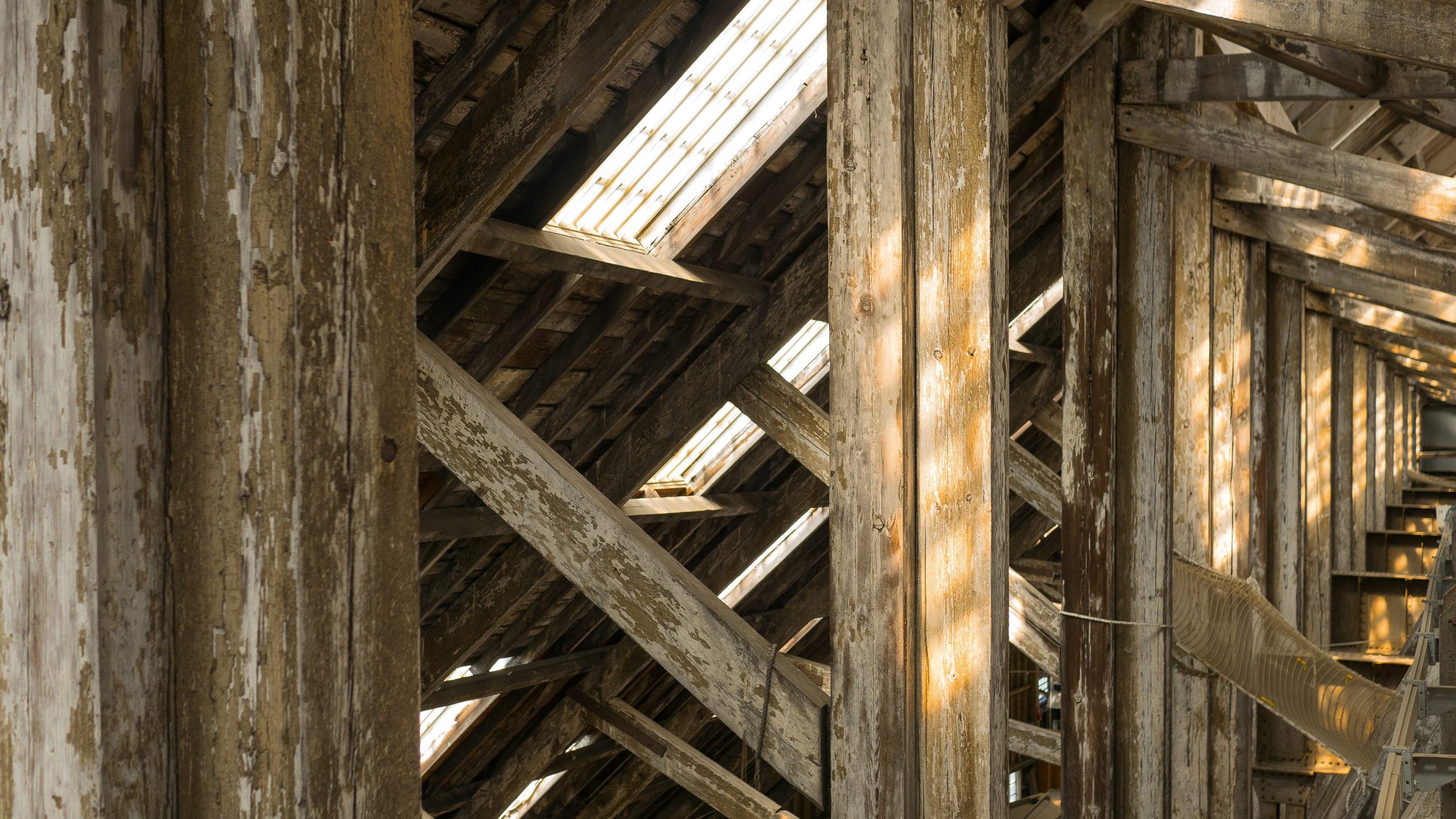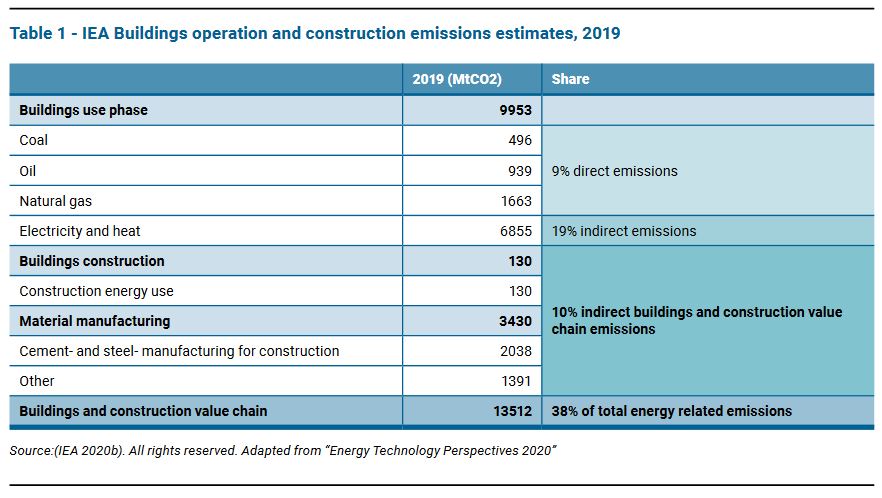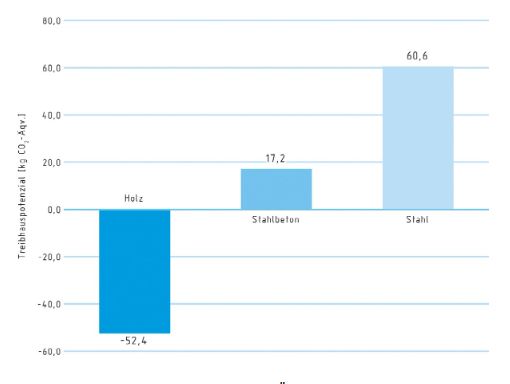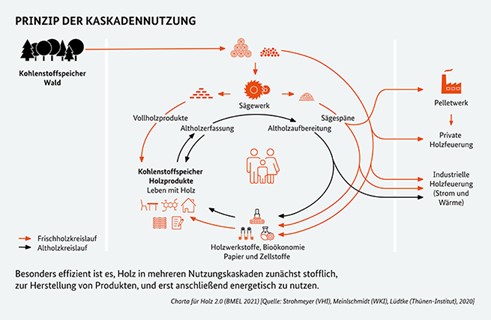
Source: Timber Construction /Leo Fosdal/ cco Unsplash
The construction sector is responsible for a significant share of global CO2 emissions. Data from the International Energy Agency (see Fig. 1) show that 10% of emissions are a result the production of building materials and construction alone.

Fig. 1: CO2 emissions in the construction process and building use
From: 2020 Global Status Report For Buildings And Constructions
It is precisely for this reason that leading climate researchers and building practitioners who pursue a sustainable approach are now advocating the increased use of renewable building materials. In this context articularly wood as a building material is strongly recommended.
The most imprtant advantage of wood, compared to conventional building materials such as concrete and steel, is that wood stores carbon during growth phase and accordingly removes CO2 from the environment. (see Fig. 2)

Fig. 2: Global warming potential in kg CO2-eqv. during production
From: VDI Centrum Ressourceneffizienz
The DGNB also addresses these advantages in its positioning paper, but at the same time points out that the choice of material is determined by the respective building task, not vice versa.
Thus, timber construction is not praised across the board as a solution for a more sustainable building sector, but emphasises that a more differentiated view is required.
A consideration of the sustainability of timber and timber-frame buildings throughout their life cycle should be undertaken.
Beginning of life:
Basic requirement for sustainable timber construction is a sustainable forest management, in which at least the same amount of wood is reforested as is extracted.
Particularly in the course of the steadily increasing demand for wood, wood should not be considered as the only renewable building material in the construction process. Other sustainable building materials such as flax, hemp or bamboo should also be taken into consideration.
Processing:
The environmental impact and the future reuse and recycling potential of wood strongly depend on the respective processing.
If possible, subsequent thermal recycling should be made possible without additional protective measures. Therefore used coatings and binders should be viewed critically. With the exception of window frames, chemical wood preservatives are no longer required for wood products used indoors.
End of life:
In order to enable a real sustainable building practice, as early as possible during the planning process consideration should be focused to how reuse can be made possible at the component level. The aim is to continue using timber building materials as building components for as long as possible and only to utilise them for energy in a final step, so that the bound CO2 is released as late as possible.
Cascade utilisation (see Fig. 3) pursues the approach of preserving the value of timber building components. Wood-based materials are used as long as possible for the building and are only used for energy recovery when they can no longer be used for the same purpose

Fig. 3: Global warming potential in kg CO2-eqv. during production
From: Charter For Timber
To facilitate future reusability, good, later dismantling capability by separable, mechanical or detachable connections and the durability of the components should be ensured already during the construction phase.
The concept of “urban mining” follows this approach. Here, buildings are understood as “raw material stores of the future” and, as an example, using special adhesives is dispensed in order to simplify deconstruction.
To further simplify reuse at component level in the future, a “digital twin” will be used. Here all information about the construction and materials used will be stored,
